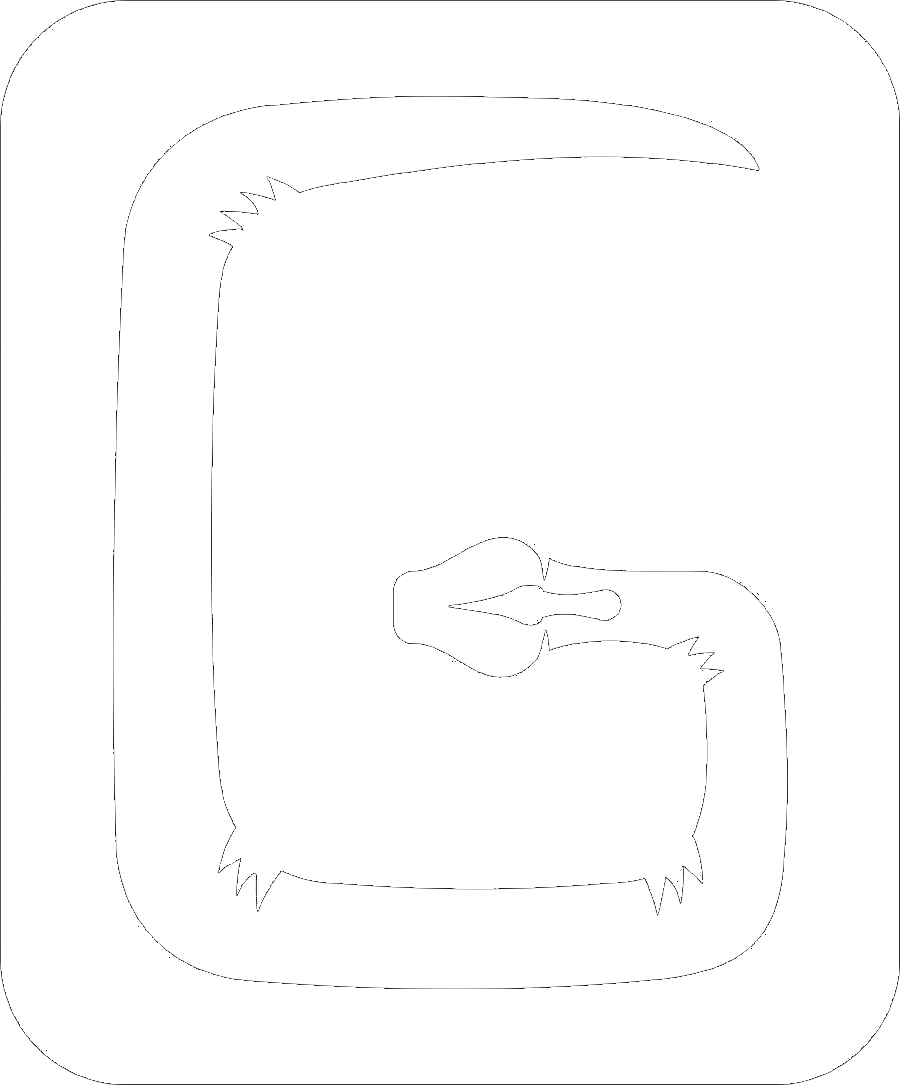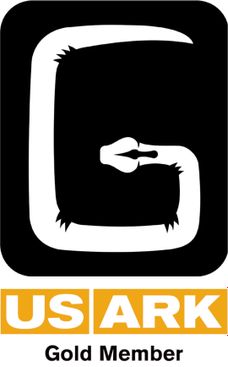Blue-tongued Skink Care
Why own a blue tongue skink?
- Blue tongue skinks (BT's) may be the easiest of all lizards to keep.
- They are great pets for reptile enthusiasts of all levels.
- They have tons of personality and great dispositions.
- BT's have simple caging requirements and uncomplicated diets.
- Live food is not required, so there is no need to run to the pet store and buy crickets.
- They are very curious, which is a mark of intelligence.
- They are extremely hardy and docile.
- BT's have a life expectancy of 15+ years.
- BT's are often listed as one of the top five reptile choices for children and beginners.
- Many reptiles do not like to be handled, some tolerate it, but BT's seem to enjoy the attention.
- They will consistently reward and surprise their keepers with their friendly and curious personalities.
- They are the ultimate pet lizard!
Northern blue-tongued skink Care (Tiliqua scincoides intermedia)
This care sheet applies specifically to the Northern blue-tongued skink but most species and subspecies of blue-tongued skink (hereafter, "BT" or "skink") can be kept using these guidelines. Please consult an additional care sheet or breeder for other species.
Introduction
Northern BT's inhabit the woodlands and grasslands of northern Australia. BT's are ideal for beginners with loads of personality and great dispositions. They are also an excellent choice for advanced hobbyists as breeding them can be challenging and certain species/subspecies and localities are extremely rare.
Availability
Northern blue tongue skinks have become very popular and are usually available from U.S. breeders. Other BT's, including Indonesian blue-tongued skinks (Tiliqua gigas gigas), are also available, but Northern blue tongue skinks are hardier and typically make better pets. Be sure to choose reptiles from a reputable source and look for active lizards with bright, open eyes. Check for toes absent of unshed skin and observe the overall health of the lizard.
Northern blue tongue skinks range in price from $300 to thousands of dollars (high-colored or rare examples). Rarely bred blue-tongued skink species/subspecies such as Centralians, blotched, and shinglebacks are available and will cost $2000+ each.
Size
Northern BT adults usually range 18-24 inches in total length and are the largest (but not the longest) of the blue tongue skinks.
Life Span
Kept properly, BT's will live 15+ years.
Housing
Baby skinks should be housed in specialty high-density plastic/PVC cages, terrariums, or 10-20 gallon glass tanks with full screen tops. Babies should always be kept separately. Adult blue tongue skinks require an enclosure at least 36”L x 18”W x 10”H with proper ventilation. BT's are terrestrial and prefer floor space over climbing area. They are horrible climbers and certainly not nimble lizards. BT's are best kept separately. You may be able to house females together, or a male and female pair, but observe any cage mates very closely. If they fight, then keep them in separate cages. Males should not be housed together.
Lighting and Temperature
Reptiles control their body temperature through thermoregulation. Every cage should have a warm side and a cool side. This is very important! Place all heating and lighting at one end of the cage (far left or far right). If your reptile gets too warm, he will move to the cool side. If he is too cool, he will move to the warm side. This is a simple definition of thermoregulation. All reptile cages should include a thermometer to monitor temperature.
BT enclosures should have temperatures on the cool side of 75-82°F and the cool side can drop to 70°F at night. The warm end of the enclosure should have a basking area of 90-100°F. This can be accomplished with an under tank heater, an incandescent basking light (or heat emitter), or a combination. Overhead lamps are appreciated as they allow the skink to bask. All heating and lighting devices should be placed on the warm end of the enclosure. If an under tank heater is provided, overhead heating devices can be turned off at night. Daylight bulbs should be on a maximum of 12 hours each day.
Conflicting opinions about the blue tongue skink’s need for full-spectrum lighting are held. There are several documented cases of blue tongues being raised successfully without any exposure to full-spectrum lighting. I do suggest UVB lighting in enclosures and UVB is generally recommended for keeping blue tongue skinks. UVB lights should be on 8-12 hours each day. Any UVB bulb will also provide UVA which is beneficial to blue tongue skinks.
Substrate and Accessories
Aspen, recycled paper substrates, fir bark, cypress mulch (not kept moist), and artificial turf (not preferred) can all be used. Whichever substrate is used, be sure the skink does not ingest it. Ingesting substrate can be deterred by using a feeding dish. BT's spend their time on the ground so keep the substrate clean and maintained. NOTE: cedar chips, clay cat litter, orchid bark, and walnut shells should never be used. These substrates may lead to toxicity, impaction, or respiratory concerns.
BT's may climb over rocks and logs but they are not good climbers so be sure they cannot fall from high ledges. Proper housing accessories include cork bark, Mopani wood, logs, large rocks, hide boxes, and shelters. Do not clutter the cage as blue tongues enjoy plenty of open space. Any elaborate decorations will be rearranged by skinks.
Diet and Feeding
While BT's are extremely hearty animals that will thrive on most diets, a well-balanced diet will result in a more active, healthier skink. They are omnivorous and should be fed a combination of meats, vegetables, and fruits. Variety is the most important aspect of their diet. Switch protein sources and use diversity when feeding canned foods. A balance of 50% vegetables/greens, 40% meats, and 10% fruits is ideal. Adults should be fed 2-4 times weekly (depending on individuals and also season). Baby blue tongues do best when fed daily or at least every other day. Feed skinks as much as they will eat in one sitting. Obesity problems seen in other lizards are rarely seen in BT's. Uneaten food should be removed when the skink is finished.
A quality vitamin/calcium supplement with vitamin D3 may be important, especially if the diet is not varied and well-rounded. A sprinkle over the food every third feeding is sufficient for adults (every other meal for young blue tongues). Varying opinions occur about the need for this supplementation, but it is usually recommended.
Below is a list of menu items for your BT's. Feel free to try other possibilities but avoid citrus, avocado, eggplant, rhubarb, and high sodium canned meats/foods.
PROTEINS:
- Canned super premium dog/cat food
- Dry super premium dog/cat food (moistened)
- Canned insect products (any variety, but snails are a favorite)
- Mealworms and Superworms
- Hard-boiled eggs
- Boiled chicken
- Ground turkey (cooked)
- Lean ground beef (cooked)
- Pinky Mice (live or frozen/thawed, but only occasionally)
FRUITS & VEGGIES:
- Collard Green
- Turnip Greens
- Mustard Greens
- Squash (including spaghetti, scallop, butternut, acorn, Hubbard, etc.)
- Peas
- Brussel sprouts
- Carrots
- Dandelions (pesticide free)
- Hibiscus flowers (pesticide free)
- Mango
- Raspberries
- Figs
- Papaya
- Cantaloupe
- Strawberries
- Blueberries
Several brands of dog/cat food are available with good ingredients. If feeding canned dog/cat foods, be sure to feed only super premium foods with no by-products and no meat/bone meal. Many foods are also available with fruits and vegetables included, which is not a substitute for fresh foods, but is better than 100% protein foods. Cat foods usually contain twice the protein of dog foods. I suggest dog food diets for blue tongues over cat foods. If a skink appears thin or has just been rescued from improper conditions, cat/kitten food will help add weight. Cat food may also be fed to breeding skinks and newborns. Be sure to read the label on all foods and see the notes below.
Many reptile (and even dog/cat) foods on the market contain little or no nutrition, despite what they advertise with the false information on their packaging or television. See the guideline below for foods with little or no nutrition (don't believe their packaging). If they contain any or all of the ingredients listed below, they are a low quality food.
Below is a simple guideline for foods NOT to use:
- Corn-based foods
- Foods containing artificial colors
- Foods containing by-products (i.e. chicken by-products)
- Foods containing meat/bone meal
- Water as main ingredient
Water and Humidity
Clean water should always be accessible in an appropriate water dish. BT's are not good swimmers and must be able to easily exit the water bowl. Northern blue tongues are from semi-dry areas and require low humidity with adequate ventilation. Humidity levels ranging between 25-40% are ideal. A hygrometer (humidity gauge) can be used to monitor humidity levels. NOTE: Indonesian, Tanimbar, Irian Jaya, Merauke, and Kei Island blue tongue skinks may prefer slightly higher humidity in the 40-45% range.
Handling and Temperament
Any new reptile should be allowed to acclimate for a few days and should not be handled until he is comfortable in the new environment. Once the new reptile is feeding regularly, then handling can begin. First handling sessions should be ten minutes or less. Be sure to hold BT's close to the floor or on a bed in case he is dropped. Fully support the skink’s entire body so he feels secure. BT's are very personable and often enjoy a good scratch on the head or chin. Many reptiles do not like to be handled and some reptiles tolerate it. BT's seem to enjoy attention.
Final Words
BT's will consistently reward and surprise their keepers with their friendly and curious personalities. They are great for reptile enthusiasts of all levels. The unique and intelligent blue-tongued skink may be the ultimate pet lizard.
© Copyright. All rights reserved. Content from this site may not be used without written consent from Phil Goss. Logo enhanced by Dozier Studio.
We need your consent to load the translations
We use a third-party service to translate the website content that may collect data about your activity. Please review the details in the privacy policy and accept the service to view the translations.

